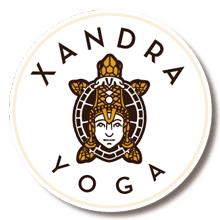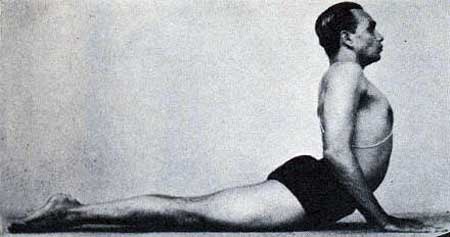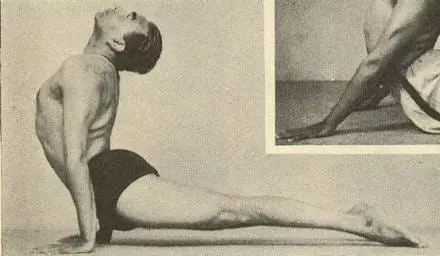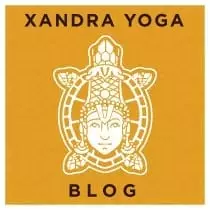Photo Credit: BKS Iyengar – Light on Yoga
Bhujanga – Snake or Cobra, Asana – Posture
I do believe there is some confusion about the Cobra pose, « Bhujangasana », and Upward Facing Dog, « Urdhva Mukha Svanasana ».
Urdhva – Upward, Mukha – Face, Svana – Dog, Asana – Posture
Urdhva Mukha Svanasana – Iyengar Yoga Blog
Bhujangasana is NOT Urdhva Mukha Svanasana
I have been watching a lot of Youtube videos and recently attended different yoga classes, and in many of them Cobra was taught as Upward Facing Dog, or as a variation of it.
I think it is important to understand that these two asanas are different from each others, they are not a variation of each others. Their practice is different.
Bhujangasana in Suraya Namaskara, Hatha Yoga style
Bhujangasana is taught in the Sun Salutation, Hatha Yoga.
Urdhva Mukha Svanasana Suraya Namaskara A (or B)
Differences
For Bhujangasana :
- Legs are together,
- Pubic bone and pelvis are on the yoga mat,
- Pubic bone and ankles are pressing against the mat to lift the torso up,
- Internal rotation of the femur bone to protect the lower back.
For Urdhva Mukha Svanasana :
- Feet are not together,
- Legs are hips width distance,
- Ankles are on the mat, arms are lengthening,
- Elbows are not in contact with the floor,
- Forearms are not touching the floor,
- Legs are not together and not touching the floor,
- Pelvis is not on the yoga mat.
Therefore these are two different asana or postures with different names.
Urdhva Mukha Svanasana and variations
Please note that the variation of Urdhva Mukha Svanasana is not Bhujangasana (and vice versa).
If at all there is a need of bringing the knees on the floor, legs will be hips width distance and the pelvis won’t be in contact with the yoga mat.
Variation is different from Bhujangasana.
How to teach Urdhva Mukha Svanasana for beginners:
- From Chaturanga Dandasana, fold at the knees and bring them on the yoga mat,
- bend at the elbows and bring the torso forward, at the same time lengthen both arms,
- bring the torso up, stretching the skin of the belly. The pelvis will be moving forward,
- knees shall remain on the floor, however please note that the pelvis and the pubic bone are not in contact with the yoga mat.
Bhujangasana and variations.
Orange for Beginner : forearms, elbows on the floor.
Green for Intermediate practice : elbows are lifted.
Purple, for more advanced practice : bring both arms back.
Please note that even in the variation both legs are together, internal rotation of the femur bone. For all backbends it is highly recommended to use the internal rotation of the femur bone in order to protect the lower back and to work more from the core.
Therefore we can easily say that the Cobra pose called as Bhujangasana and Upward Facing Dog called as Urdhva Mukha Svanasana, are two different asana, and both of their practice differ.
We all know the difference between Champagne and sparking water, Yoga and Pilates, Zumba and Cross Fit.
Do not mix everything.






